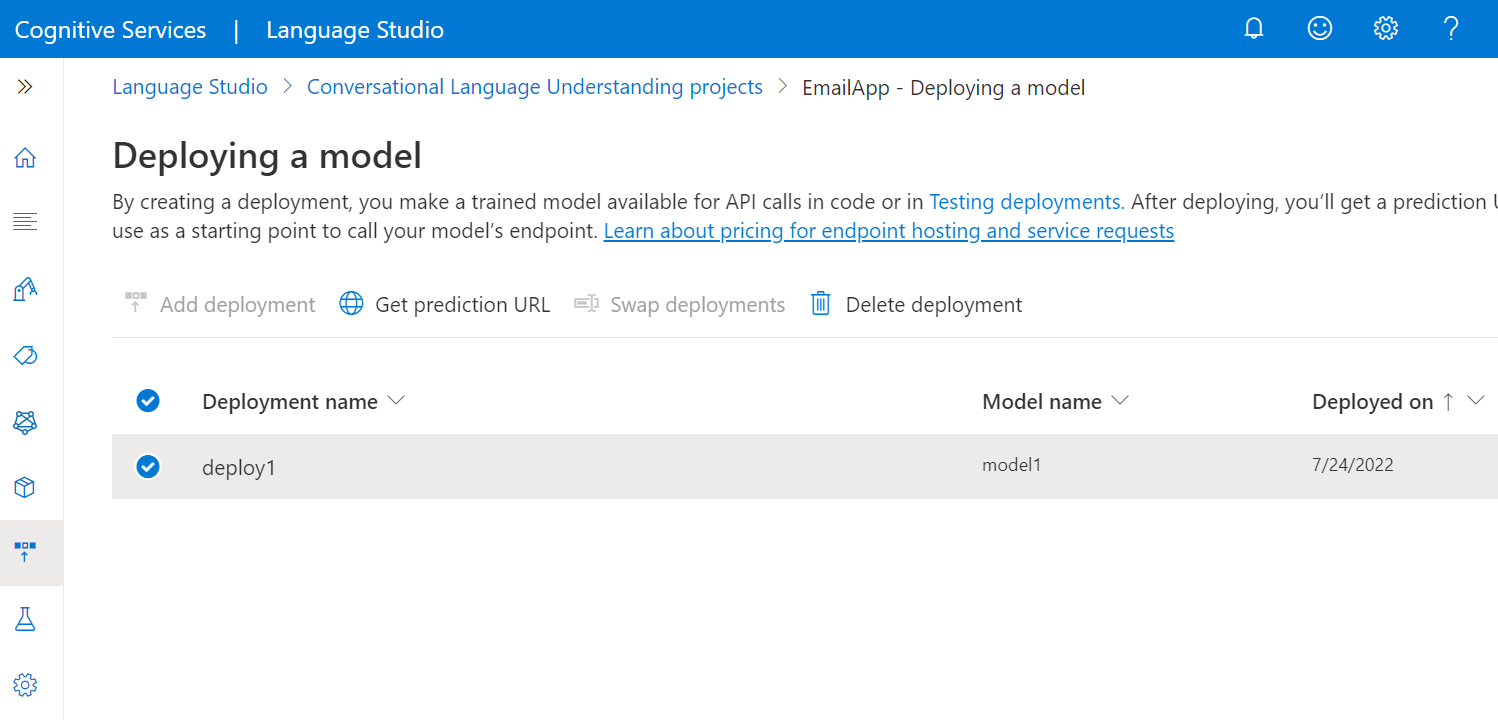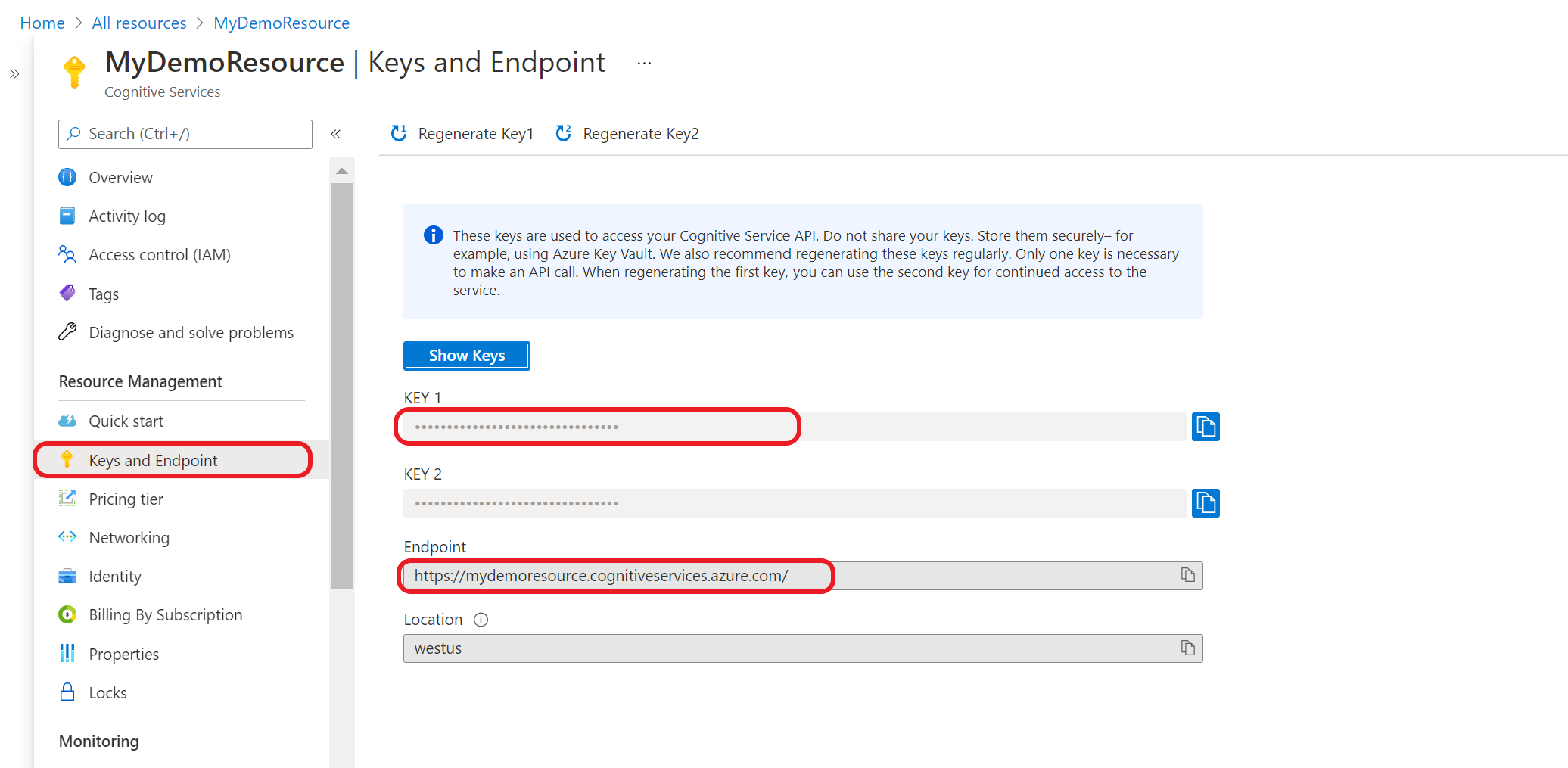Note
Access to this page requires authorization. You can try signing in or changing directories.
Access to this page requires authorization. You can try changing directories.
After the deployment is added successfully, you can query the deployment for intent and entities predictions from your utterance based on the model you assigned to the deployment. You can query the deployment programmatically through the prediction API or through the client libraries (Azure SDK).
Test deployed model
You can use Language Studio to submit an utterance, get predictions, and visualize the results.
To test your deployed models from within the Language Studio:
Select Testing deployments from the left side menu.
For multilingual projects, from the Select text language dropdown, select the language of the utterance you're testing.
From the Deployment name dropdown, select the deployment name corresponding to the model that you want to test. You can only test models that are assigned to deployments.
In the text box, enter an utterance to test. For example, if you created an application for email-related utterances you could enter Delete this email.
Towards the top of the page, select Run the test.
After you run the test, you should see the response of the model in the result. You can view the results in entities cards view or view it in JSON format.
Send a conversational language understanding request
After the deployment job is completed successfully, select the deployment you want to use and from the top menu select Get prediction URL.
In the window that appears, copy the sample request URL and body into your command line.
Replace
<YOUR_QUERY_HERE>with the actual text you want to send to extract intents and entities from.Submit the
POSTcURL request in your terminal or command prompt. You receive a 202 response with the API results if the request was successful.

